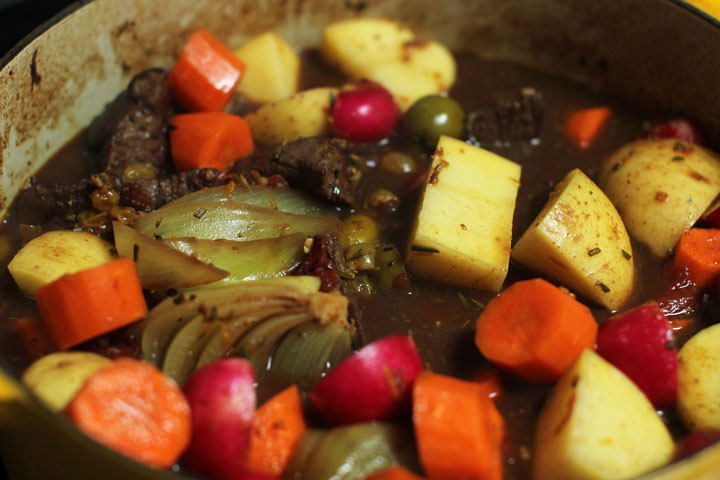Chef Michael Costa knows that if you ask diners if they’d like a lamb chop or crown roast, you may get some wary looks. Isn’t lamb a bit expensive? And gamey?

But offer them an Adana kebab – spiced ground lamb wrapped around a skewer and grilled to sizzling perfection – and you may have a new lamb fan.
“It’s kind of a gateway drug,” jokes Costa, chef at Zaytinya in Washington, D.C., part of Spanish-American chef Jose Andres’ restaurant group. As a native of Greece, Costa comes by his love of lamb naturally and he points out that lamb, goat and mutton (meat from older sheep) are staples worldwide.
But in North America, lamb hasn’t made much headway against the triumvirate of beef, chicken and pork.
In response, producers have been making a concerted effort to win over consumers, breaking down the animal into smaller and more manageable cuts than the traditional legs and racks and, in particular, promoting ground lamb as the basis for quick meals, burgers and sausages.

It seems to be working. In 2011, 11 million pounds of ground lamb were sold in the U.S. By 2014, that number had more than doubled to 22.5 million pounds, according to the American Lamb Board. Still, lamb remains a small part of the overall meat market. In 2014, for instance, Americans consumed 24.1 billion pounds of beef, according to USDA data. But the growth rate is encouraging for lamb producers.

Get breaking National news
“Really, the industry, the lamb suppliers and marketers are getting more savvy,” says Megan Wortman, the board’s executive director.
John Fink, owner of The Whole Beast restaurants with two locations in San Francisco, likes to cook whole lambs for catered events and has a mobile smoker for the purpose. He also likes the more obscure cuts of lamb, such as neck, which is rarely seen in U.S. grocers because it doesn’t have a lot of meat on it and requires careful cooking. To Fink, it’s “the best part of the lamb, to be perfectly honest.”
He uses lamb neck meat – marinated and cooked at low temperatures for hours until it is meltingly tender – for gyro sandwiches. “It’s a labour of love, but the end result and the smoke really adds a great nuance.”
Smoking lamb helps deal with a common complaint about it, that it’s too “gamey.”
“I actually like the gaminess of lamb, but most Americans don’t. For me, it’s been a great bridge to really turn people on to lamb.”
Burgers are another good way to introduce people to lamb and Fink has had success selling lamb burgers at his Whole Beast location in San Francisco’s AT&T Park. Beef burgers still lead by about 3:1, but “lamb is really starting to get some traction,” he says.
—
BAKED MEDITERRANEAN LAMB STEW
Start to finish: 2 hours (25 minutes active)
Servings: 8
- 1 tablespoon olive oil
- 3 pounds lamb leg, trimmed of fat and cut into 2-inch cubes (or 2 pounds lamb stew meat)
- Kosher salt and ground black pepper
- 1 teaspoon ground dry turmeric
- 1 teaspoon cumin seeds
- 1 large yellow onion, trimmed, peeled and cut into wedges
- 3 tablespoons minced fresh rosemary
- 4 cloves garlic, roughly chopped
- Zest and juice of 2 oranges
- 15-ounce can fire-roasted diced tomatoes
- 1/2 cup green olives, halved
- 1/2 cup golden raisins
- 2 cups red wine
- 3 medium yellow potatoes, cut into 2-inch pieces
- 12 medium radishes, halved
- 3 carrots, peeled and cut into 1-inch pieces
Heat the oven to 350 F.
In a large Dutch oven over medium-high, heat the olive oil. Working in batches, season the lamb pieces with salt and pepper then sear them on all sides, 5 to 6 minutes per batch, turning often. As each batch is finished, transfer to a plate and repeat the process.
Once all of the lamb has been seared, return it to the pot along with the turmeric, cumin seeds, onion, rosemary, garlic, orange zest and juice, tomatoes, olives, raisins and red wine. Cover and place in the oven to cook for 45 minutes. Gently stir in the potatoes, radishes and carrots. Cover and return to the oven for another 40 to 50 minutes, or until the lamb and the vegetables are tender. Adjust seasoning as needed.
Nutrition information per serving: 330 calories; 70 calories from fat (21 per cent of total calories); 8 g fat (2.5 g saturated; 0 g trans fats); 60 mg cholesterol; 590 mg sodium; 30 g carbohydrate; 4 g fiber; 13 g sugar; 23 g protein.
(Recipe from Alison Ladman)


Comments